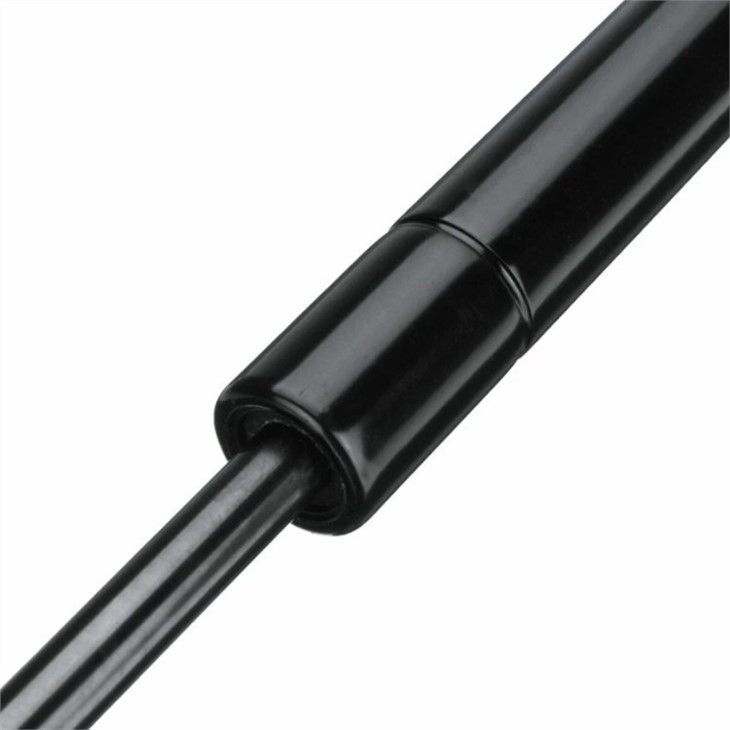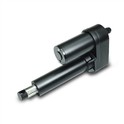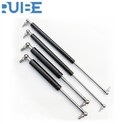When it comes to automotive components and various mechanical systems, gas struts play a crucial role in providing support, facilitating smooth movement, and ensuring safety. Among the different types of gas struts, bonnet gas struts and trunk gas struts are two commonly used ones, each with its own unique characteristics and applications. As a bonnet gas struts supplier, I am well - versed in the details of these two types of gas struts and would like to share the differences between them.
1. Application Areas
Bonnet gas struts are primarily designed for use in the automotive industry, specifically for car bonnets. The bonnet, also known as the hood in some regions, is the hinged cover that provides access to the engine compartment of a vehicle. Bonnet gas struts are installed on either side of the bonnet, allowing it to be easily lifted and held open at a stable position. This makes it convenient for mechanics or car owners to perform maintenance, check fluid levels, or make repairs under the bonnet.
On the other hand, trunk gas struts are used for the trunk or boot of a vehicle. The trunk is the enclosed space at the rear of a car where passengers can store their luggage, groceries, or other items. Trunk gas struts assist in opening and closing the trunk smoothly. They also keep the trunk lid open, preventing it from accidentally closing while loading or unloading items.


2. Load - Bearing Capacity
One of the most significant differences between bonnet gas struts and trunk gas struts lies in their load - bearing capacity. The bonnet of a vehicle is generally lighter than the trunk lid. This is because the bonnet is mainly made of thin metal sheets and is designed to cover the engine compartment without having to hold large amounts of weight. As a result, bonnet gas struts typically have a lower load - bearing capacity. They are engineered to support the relatively light weight of the bonnet and provide a gentle yet effective lifting force.
Trunk gas struts, however, need to handle a much heavier load. The trunk lid often has a larger surface area and may be made of thicker materials. Additionally, the trunk may be filled with heavy items, so the gas struts must be able to support the weight of the lid itself as well as any additional load inside the trunk. Therefore, trunk gas struts usually have a higher load - bearing capacity compared to bonnet gas struts.
3. Size and Dimensions
The size and dimensions of bonnet gas struts and trunk gas struts also differ. Bonnet gas struts are usually shorter and more compact. This is because the bonnet of a car has a relatively limited space for the installation of gas struts. The shorter length allows them to fit neatly within the engine compartment area without interfering with other components such as the radiator, hoses, or electrical wiring.
Trunk gas struts, in contrast, are often longer and may have a larger diameter. The trunk area generally has more space available for gas strut installation, and the longer length is required to provide the necessary leverage and support for the larger and heavier trunk lid. The larger diameter also contributes to the increased load - bearing capacity of trunk gas struts.
4. Mounting and Installation
The mounting and installation methods of bonnet gas struts and trunk gas struts can vary. Bonnet gas struts are typically mounted at specific points on the bonnet and the body of the car near the engine compartment. The mounting points are carefully designed to ensure that the gas struts can provide the correct angle and force for lifting and holding the bonnet open. In most cases, the installation process is relatively straightforward, but it requires some basic knowledge of automotive components and tools.
Trunk gas struts are mounted on the trunk lid and the car body at the rear of the vehicle. The mounting locations are chosen to optimize the opening and closing motion of the trunk. Since the trunk lid is larger and heavier, the installation of trunk gas struts may be a bit more complex. It may involve aligning the gas struts correctly to ensure smooth operation and proper weight distribution.
5. Force and Extension
The force required for bonnet gas struts and trunk gas struts also varies. Bonnet gas struts need to provide just enough force to lift the bonnet easily. The force is designed to be gentle, allowing the user to open and close the bonnet with minimal effort. The extension length of bonnet gas struts is also relatively short, corresponding to the range of motion required for the bonnet to open fully.
Trunk gas struts, due to the heavier load they need to support, require a stronger force. The force is calibrated to lift the heavy trunk lid and keep it open securely. The extension length of trunk gas struts is usually longer to accommodate the larger opening angle of the trunk lid.
6. Durability and Lifespan
Both bonnet gas struts and trunk gas struts are designed to be durable, but their lifespan can be affected by different factors. Bonnet gas struts are exposed to the heat and vibrations generated by the engine. The high - temperature environment under the bonnet can potentially degrade the seals and internal components of the gas struts over time. However, since the load on bonnet gas struts is relatively light, they may have a longer lifespan in terms of the number of opening and closing cycles.
Trunk gas struts, on the other hand, are exposed to the elements such as rain, snow, and dirt. The constant exposure to these environmental factors can cause corrosion and damage to the gas struts. Additionally, the heavier load and more frequent use (especially if the trunk is used often for loading and unloading) can also reduce their lifespan. Therefore, proper maintenance, such as regular cleaning and lubrication, is crucial for trunk gas struts to ensure a long - lasting performance.
Other Related Gas Strut Applications
Apart from bonnet and trunk gas struts, there are other types of gas struts used in different applications. For example, Gas Spring for Tool Box is designed to provide support for the lids of tool boxes. These gas springs allow for easy opening and closing of the tool box lids, keeping them open at a convenient angle for users to access their tools.
Gas Lift for Furniture is another common application. Gas lifts are used in office chairs, adjustable desks, and other furniture items. They enable smooth height adjustment and provide stability during use.
Gas Spring for Storage Bed is specifically designed for beds with storage compartments. These gas springs assist in lifting the bed frame to access the storage space underneath, making it easier for users to store and retrieve items.
Conclusion
In conclusion, bonnet gas struts and trunk gas struts have distinct differences in terms of application areas, load - bearing capacity, size and dimensions, mounting and installation, force and extension, as well as durability and lifespan. Understanding these differences is essential for both automotive manufacturers and consumers. As a bonnet gas struts supplier, I am committed to providing high - quality products that meet the specific requirements of different vehicles.
If you are in the market for bonnet gas struts or have any questions about our products, please feel free to contact us for procurement and further discussions. We look forward to working with you to meet your gas strut needs.
References
- Automotive Engineering Handbook, various editions
- Gas Strut Manufacturer's Technical Manuals
- Research papers on automotive component design and performance






